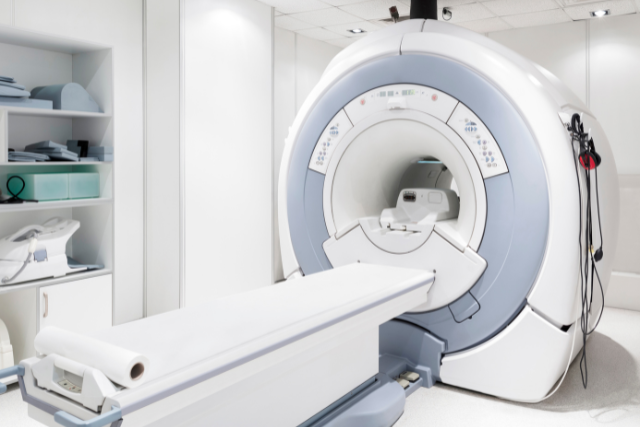When it comes to maintaining our health, certain issues can be more uncomfortable than others. One such condition is anal fistula, which affects many individuals, although it often goes unnoticed until symptoms arise. This blog will help you understand the symptoms of anal fistula and provide clarity on what to look out for. By recognizing these signs early, you can seek treatment before the condition worsens. Along the way, we’ll briefly touch on treatments like Laser Hemorrhoidoplasty that may also offer relief for related conditions.
What is an Anal Fistula?
Before diving into the symptoms, it’s important to understand what an anal fistula is. An anal fistula is a small tunnel that forms between the skin near the anus and the inside of the anal canal. It usually develops after an abscess, a painful, swollen area filled with pus. In some cases, this abscess does not heal properly, leading to the formation of a fistula.
The condition can be caused by several factors, including infections, injury, or underlying diseases such as Crohn’s disease. Now, let’s look into the symptoms of anal fistula so that you can better recognize this condition if it occurs.
Common Symptoms of Anal Fistula
1. Pain and Discomfort
One of the most noticeable symptoms of anal fistula is pain. Individuals with this condition often experience sharp, persistent pain around the anus. This pain tends to worsen during bowel movements, sitting, or any pressure on the affected area. Over time, the pain may become more severe as the fistula gets deeper.
The pain may also be accompanied by swelling or redness near the anus. It is not uncommon for people to feel discomfort when walking, sitting, or performing basic activities.
2. Pus or Fluid Discharge
Another common symptom of anal fistula is discharge. This can manifest as pus, blood, or watery fluid leaking from the opening of the fistula. The discharge may have a foul odor, which is due to the infected tissue in the fistula. Individuals may find themselves needing to clean the area more often than usual, especially after bowel movements.
If left untreated, the discharge may increase, and the infection may spread, making the condition even more difficult to manage.
3. Irritation and Itching
Irritation and itching around the anus are often signs of anal fistula. The constant moisture from the pus and fluid discharge can cause the skin to become irritated. This irritation can lead to itching, which further exacerbates the discomfort.
Sometimes, individuals may confuse this itching with hemorrhoids, but it’s important to note that itching can also be a sign of an anal fistula, especially when accompanied by other symptoms.
4. Recurrent Abscesses
If you’ve had one abscess near your anus, it could be an indicator of an anal fistula. Abscesses tend to reoccur in individuals with a fistula, as the infection remains trapped in the tunnel created by the fistula. A recurrent abscess is often painful and may need to be drained by a healthcare professional.
Repeated abscesses and infections are significant warning signs of a fistula that should not be ignored.
5. Swelling and Redness
As the infection persists, anal fistula symptoms often include swelling and redness around the affected area. This swelling is a direct result of inflammation and infection in the tissues near the anus. If left untreated, the swelling can become more pronounced and harder to treat.
Sometimes, swelling may lead to the formation of lumps or bumps near the anus, which are often filled with pus. These lumps may break open, leading to further discharge.
6. Fever
In some cases, an anal fistula can cause fever. This typically occurs when the infection spreads, and the body’s immune system responds to fight off the infection. A fever can indicate that the condition has become more serious and may require more urgent treatment.

Diagnosing Anal Fistula
If you experience any of the symptoms mentioned above, it’s crucial to consult with a healthcare provider. The diagnosis of an anal fistula typically involves a physical examination, and sometimes further tests, such as:
- Anoscopy: A procedure in which a doctor uses a small tube to examine the inside of the anus.
- MRI or Ultrasound: To determine the extent and depth of the fistula.
It’s important to remember that not all anal fistulas are easy to detect, so a comprehensive evaluation is essential for proper diagnosis.
Treatment for Anal Fistula
Once a diagnosis is made, treatment options for anal fistula can vary based on the severity and location of the fistula. In many cases, surgery may be necessary to remove or repair the fistula. Some common treatments include:
1. Fistulotomy
This is the most common surgical procedure used to treat anal fistulas. It involves cutting open the fistula to allow it to heal from the inside out. This surgery has a high success rate but may involve a recovery period during which the patient experiences some discomfort.
2. Seton Placement
A seton is a piece of surgical thread that is placed in the fistula to keep it open. This allows the infection to drain while the fistula heals. The seton may be left in place for weeks or months, depending on the severity of the condition.
3. Flap Repair
For complex fistulas that do not respond to other treatments, flap repair may be recommended. This procedure involves using healthy tissue to cover the fistula opening and promote healing.
4. FiLaC® (Fistula-tract Laser Closure)
FiLaC® stands for Fistula-tract Laser Closure, a modern and minimally invasive laser treatment designed specifically for anal fistulas. Unlike traditional surgeries, FiLaC® aims to preserve the anal sphincter, which helps reduce the risk of incontinence. This method involves inserting a radial laser probe into the fistula tract and delivering controlled laser energy. The laser gently closes the tract from the inside out, promoting healing while minimizing tissue damage.
FiLaC® is especially beneficial for complex or recurrent fistulas, offering a quicker recovery time, less post-operative pain, and a lower risk of complications. While it may not be suitable for all fistula types, it is increasingly becoming a preferred option for patients seeking an effective, less invasive solution.
Prevention of Anal Fistula
Preventing anal fistula is not always possible, but certain lifestyle changes and practices can reduce the risk. Here are some tips to consider:
- Maintain good hygiene: Regular cleaning of the anal area can prevent infections and abscesses.
- Avoid prolonged sitting: Sitting for long periods, especially on hard surfaces, can put pressure on the anal area.
- Eat a high-fiber diet: This helps prevent constipation, which can lead to straining during bowel movements, increasing the risk of developing fistulas.
- Stay hydrated: Drinking enough water helps maintain proper bowel function and reduces the risk of constipation.

Conclusion
The symptoms of anal fistula can range from mild to severe, but recognizing them early on is essential for effective treatment. If you experience pain, discharge, or recurrent abscesses, it’s important to consult with a healthcare professional to prevent further complications. Fistulotomy, seton placement treat the condition; Laser Hemorrhoidoplasty may help with related issues like hemorrhoids.
By understanding the symptoms of anal fistula and exploring available treatment options, you can take proactive steps to manage this condition and improve your quality of life.



